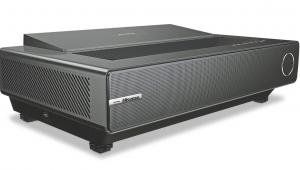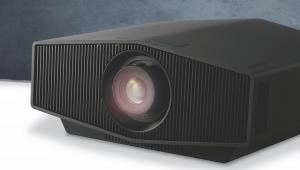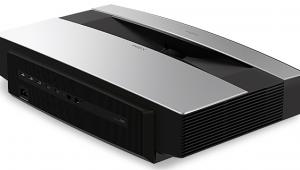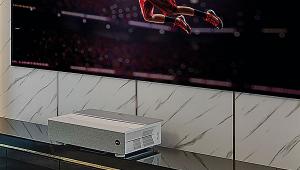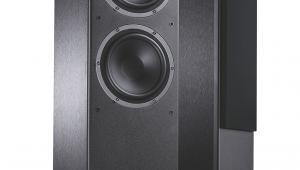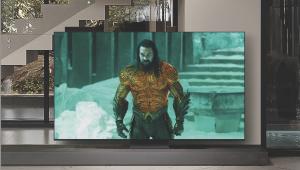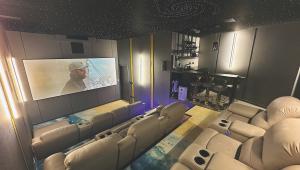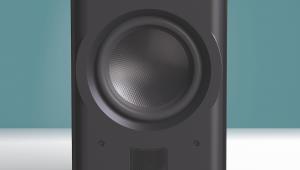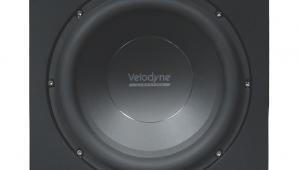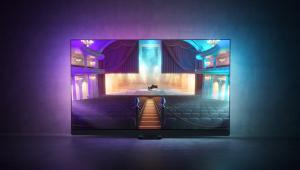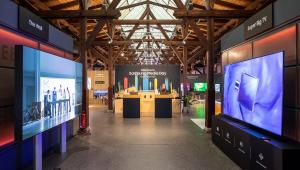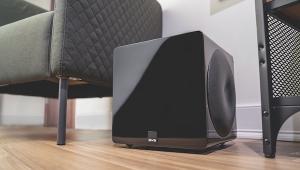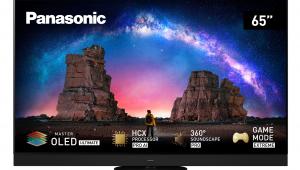JVC DLA-NZ8 4K HDR Projector Review

 JVC upgrades its native 4K projectors by swapping lamps for lasers. Steve Withers trips the light fantastic
JVC upgrades its native 4K projectors by swapping lamps for lasers. Steve Withers trips the light fantastic
It wasn't a huge surprise when JVC announced its new NZ series of laser-powered projectors last autumn, but what did surprise was the full extent of the upgrade. These new beamers include all the features found on the previous generation, but add HDMI 2.1 inputs capable of handling 8K/60p and 4K/120p, an upgraded iteration of its 8K e-Shift technology (dubbed e-ShiftX), and support for HDR10+.
The new range is headlined by the DLA-NZ9 (£25,000), which offers a claimed brightness of 3,000 Lumens, a native contrast of 100,000:1, and a 100mm all-glass lens with 'ultra-high contrast' optics. The DLA-NZ8 tested here (£15,800) shares much of the same spec (including the improved optical path), but hits 2,500 Lumens, has a contrast of 80,000:1, and uses a smaller 65mm lens.
Finally, there's the DLA-NZ7 (£11,500). This is largely the same as the NZ8, but doesn't use upgraded optics, resulting in a brightness of 2,200 Lumens and contrast of 40,000:1. The NZ7 also misses out on a wide colour gamut filter found on the NZ8 and NZ9, and uses a less advanced form of e-Shift than that of its more expensive siblings.
Of course, expensive is a relative term, with even the 'entry-level' NZ7 setting you back nearly £12k. This puts JVC's new range beyond the reach of all but the most well-heeled home cinema enthusiast. In fairness to JVC the pricing is primarily dictated by Sony's existing 4K laser projectors – the VPL-VW790ES at £10,000 and the VPL-VW890ES, which costs £25,000.
It's interesting to note that the NZ8 doesn't have a direct competitor, and based on the specs listed above it also sits in the sweet spot of JVC's new lineup, offering some serious high-end bang for its not-inconsiderable buck.
Pieces of 8
Since the NZ8 directly replaces the outgoing N7 (see HCC #298), it's useful to run through the differences between these two projectors.
Firstly, and most obviously, the NZ8 uses a BLU-Escent laser diode light source, which means increased brightness, greater consistency, and a 20,000-hour lifespan. As a result, you should be able watch a film a day for the next 20 years without worrying about image dimming or having to change the lamp.
The NZ8 uses the same three-chip 4K D-ILA device as the outgoing N7, but now includes 8K/e-ShiftX processing. A flavour of this feature, which shifted pixels in two directions to increase the perceived resolution of projected images, was introduced on the previous DLA-NX9 flagship model launched in 2019. While the entry-level NZ7 retains this approach, the NZ8 and NZ9 now shift the pixels in four directions, to display a full 8K resolution.
The ability to handle 8K sources is only possible due to another major upgrade – HDMI 2.1 inputs. And the NZ8's pair of 48Gbps ports not only accept 8K/60p but also 4K/120p, in addition to 3D and high dynamic range – specifically HDR10, HLG, and HDR10+.
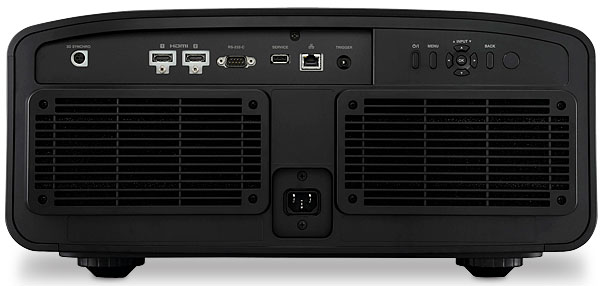
Physically, the NZ8 looks identical to the older N7, with the same bulky matte black chassis and solid build quality. The only difference is at the rear, where there are slightly larger air vents and no removable dust filter. There's been no change to the supplied remote, which is well-designed and has a useful handy backlight.

The all-glass lens is again a 17-element, 15-group design, but has been upgraded to improve contrast performance by suppressing any reflected light, which explains how the brighter NZ8 can have the same contrast ratio as the N7.
Otherwise it's business as usual, with features such as Auto Tone Mapping, which reads HDR static metadata and automatically adjusts the tone mapping accordingly, and Frame Adapt HDR, which analyses an HDR signal and changes the tone mapping on the fly. JVC's Theatre Optimiser then tweaks the PJ's HDR delivery to better match your screen's size and gain factor.
Installation remains a breeze thanks to generous motorised focus, zoom and shift controls, along with precise lens memories for those rocking a 'Scope screen. The NZ8, designed for medium and large home cinemas, has a 2x zoom and can be stand or ceiling mounted – but whatever your installation plans, it's worth remembering this behemoth weighs 23.1kg and measures 50cm wide.
On The Menu
JVC's onscreen display is predominantly the same as before, but there are a few changes reflecting upgrades made. The Frame Adapt HDR tool now offers six settings, and the Theatre Optimiser allows you to specify if your screen aspect ratio is 16:9 or 2.35:1.
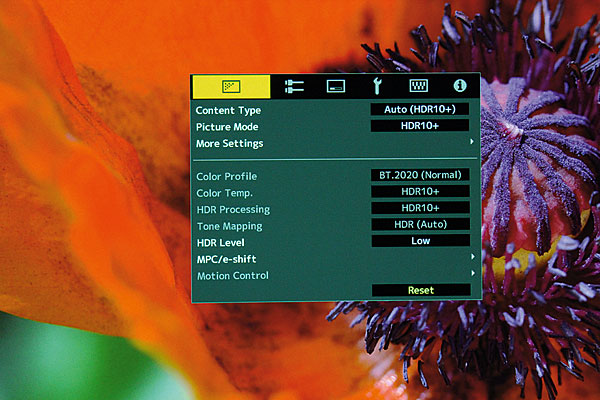
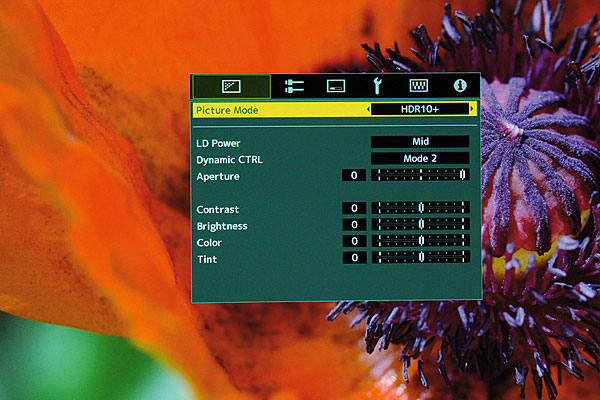
The biggest menu difference relates to the laser light source, which has three 'LD Power' options: low, mid, and high. There are also two Dynamic CTRL settings that dynamically adjust the brightness of the laser, with the second mode applying this more aggressively.
Anyone concerned about the laser's cooling being noisy needn't worry. In fact, the low and mid laser settings are as quiet as the low-lamp mode of the previous N7, allowing the NZ8's middle option to add extra brightness without creating an unwanted racket. Even the high mode isn't significantly louder, making it a viable option for those who really need additional luminance.
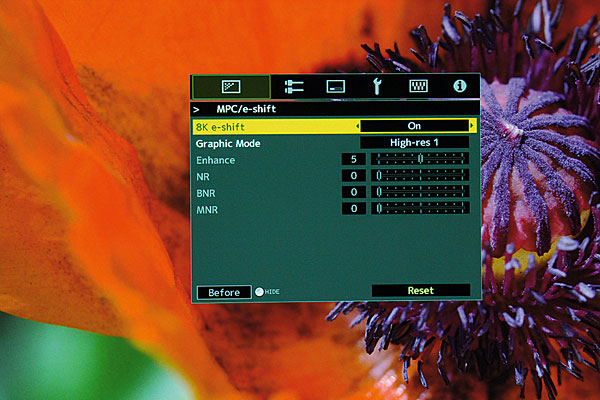
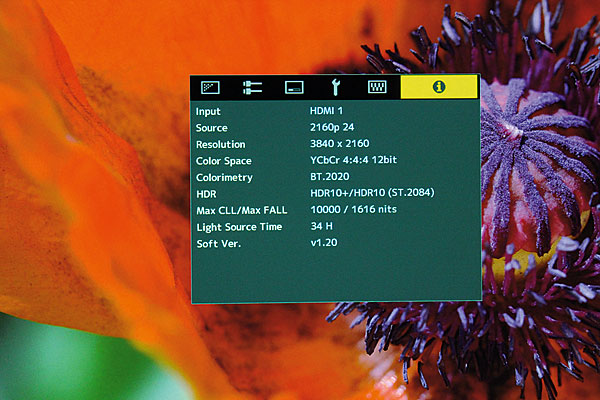
Perhaps the biggest surprise is the speed with which the NZ8 locks on to a video signal. Previous JVC models would take so long you could make a cup of tea before an image appeared, but perhaps because of the HDMI 2.1 upgrade, this new generation is decidedly nippy.
Come Away With Me
As always the most accurate picture mode is Natural, and watching the Blu-ray of Samsara revealed a series of gorgeous travelogue images. The picture looked spot-on to my eye, and measurements confirmed it. JVC isn't telling porkies when it comes to the native contrast either, with the NZ8 consistently delivering around 80,000:1 in testing.
 |
Home Cinema Choice #351 is on sale now, featuring: Samsung S95D flagship OLED TV; Ascendo loudspeakers; Pioneer VSA-LX805 AV receiver; UST projector roundup; 2024’s summer movies; Conan 4K; and more
|

